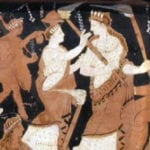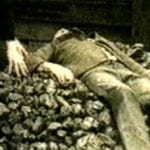 Music
Music  Music
Music  History
History 10 Less Than Jolly Events That Occurred on December 25
 Weird Stuff
Weird Stuff 10 Funny Ways That Researchers Overthink Christmas
 Politics
Politics 10 Political Scandals That Sent Crowds Into the Streets
 Weird Stuff
Weird Stuff Ten Bizarre Facts About The Doge Meme
 Our World
Our World 10 Ways Your Christmas Tree Is More Lit Than You Think
 Movies and TV
Movies and TV The 10 Coolest Stars to Set Sail on The Love Boat
 History
History 10 Things You Didn’t Know About the American National Anthem
 Technology
Technology Top 10 Everyday Tech Buzzwords That Hide a Darker Past
 Humans
Humans 10 Everyday Human Behaviors That Are Actually Survival Instincts
 Music
Music 10 Surprising Origin Stories of Your Favorite Holiday Songs
 History
History 10 Less Than Jolly Events That Occurred on December 25
 Weird Stuff
Weird Stuff 10 Funny Ways That Researchers Overthink Christmas
Who's Behind Listverse?

Jamie Frater
Head Editor
Jamie founded Listverse due to an insatiable desire to share fascinating, obscure, and bizarre facts. He has been a guest speaker on numerous national radio and television stations and is a five time published author.
More About Us Politics
Politics 10 Political Scandals That Sent Crowds Into the Streets
 Weird Stuff
Weird Stuff Ten Bizarre Facts About The Doge Meme
 Our World
Our World 10 Ways Your Christmas Tree Is More Lit Than You Think
 Movies and TV
Movies and TV The 10 Coolest Stars to Set Sail on The Love Boat
 History
History 10 Things You Didn’t Know About the American National Anthem
 Technology
Technology Top 10 Everyday Tech Buzzwords That Hide a Darker Past
 Humans
Humans 10 Everyday Human Behaviors That Are Actually Survival Instincts
10 Fascinating Unsolved Mysteries From Scotland
There’s no denying Scotland’s rugged beauty and mystical Celtic charm. There’s also a lot about the place that’s baffling to outsiders. What do men wear under their kilts? Who thought bagpipes were a good idea? Do I even want to know what’s in this haggis? These 10 mysteries are even weirder, and even the natives haven’t been able to figure them out.
10The Death Of Annie Borjesson

On December 4, 2005, the body of Annie Borjesson, a 30-year-old Swedish woman, was discovered on the shore of Prestwick, on the west coast of Scotland. Police quickly ruled it a suicide by drowning, but Annie’s family wasn’t convinced, and they uncovered some odd things when they looked into it.
When Annie’s body arrived back in Sweden, the undertakers there claimed she had several bruises that she seemed to have incurred while she was still alive. The autopsy in Scotland hadn’t recorded these bruises. There were other marks on her body, too, which official reports had concluded to be the result of collisions with debris in the sea. What most concerned the family, though, were the unanswered questions about Annie’s last day.
Annie lived in Edinburgh, but on December 3, she traveled 129 kilometers (80 mi) to Prestwick Airport for unknown reasons. She tried to withdraw cash using her credit card twice, first £100, then £50. Both times, she didn’t have enough funds in her account to complete the transaction. She proceeded to the airport, where her image was captured on video surveillance in the late afternoon.
Time stamps from the airport’s security footage show that she moved the length of the terminal in 55 seconds. Independent investigators determined that this should take over a minute and a half at normal walking speed and concluded that she must have been running. In total, she spent less than five minutes at the airport. According to a friend who had seen the footage, she appeared to be walking around looking “annoyed and angry.” She then began walking toward Prestwick itself. She wasn’t familiar with the town, which was about a mile away from the airport. A witness later claimed to have seen a figure standing on the beach near the sea, but the figure was too far away to identify.
When Annie’s family began their investigation, they hit a wall of secrecy. Scottish authorities refused to release tissue samples that could help clarify the cause of death. When the family accessed Annie’s email account, they found that all of her emails had been deleted. A friend named Maria Jansson discovered that Annie’s phone company had failed to register any of the calls she had made to Annie during 2005, and the phone company refused to discuss it with her.
Maria began to frequently receive silent phone calls. Family members had problems with their email accounts. Police claimed that there were no records of any calls to or from Annie during her last three days, even though several people remembered talking to her. It later came to light that Annie’s hair had been cut after her death and thrown away.
Annie’s family continues to campaign for a full investigation. Her mother has met with the First Minister of Scotland, and a petition of 3,000 signatures was presented to the Scottish Parliament at the end of 2013. The family wants the police to investigate the possibility that Annie was killed during the missing 16 hours between the time she left the airport and when her body was found.
9Who Hanged Mark Devlin?

In the 1830s, a ruthless gang of criminals who called themselves the Black Band dominated the city of Dundee. Since Dundee only had 14 police officers, it wasn’t difficult for the Band to indulge their penchant for robbery and rioting.
The law got a break in 1835, when they caught a Black Band member named Mark Devlin breaking into a property and decided to make an example of him. Devlin was tried and sentenced to death by hanging. That was a bit of a problem, though, because Dundee didn’t have a hangman. Hanging had been used by the English to execute supporters of Scottish rebels, so no one in Dundee wished to be associated with it.
They arranged for a hangman to travel from Edinburgh and made a makeshift platform on the side of a local Guild Hall. When the executioner didn’t show, officials scrambled to find a replacement. A man identified as local showman James Livingstone volunteered, and Devlin was sent to meet his maker. Livingstone’s reputation tumbled quickly as a result, which didn’t make him too happy, because Livingstone had actually been 24 kilometers (15 mi) away in the neighboring town of Forfar at the time. He had reliable witnesses who saw him there, and he was eventually able to persuade everyone that he wasn’t even present at Devlin’s hanging. But who did hang Mark Devlin? Nearly 180 years later, we don’t know and likely never will.
8The Appin Murder

On May 14, 1752, Colin Roy Campbell of Glenure was shot near the Scottish town of Appin. Campbell was not a well-liked man, as he was a government agent in charge of local evictions. He was killed when he was on his way to evict members of the local Stewart clan, to be replaced with members of his own family. Ailean Stewart was the main suspect. He fled, but was tried and sentenced to death in his absence. His brother, James, was also sentenced to death as an accomplice, even though an alibi placed James nowhere near the shooting.
The case has been held up as a terrible miscarriage of justice. The head judge and 11 of the 15 jury members were from the Campbell clan. In 2008, a Scottish lawyer petitioned the government to have the sentence officially overturned, stating there was “not a shred of evidence” that the Stewarts had been involved. In 2013, modern forensic analysis determined that there must have been two gunmen. That contradicted the report from the sole witness of the crime, who claimed to have seen a single shooter on a hill.
According to research by author James Hunter, the shooter is a man named Donald Stewart. Hunter claims it was well known among many Stewarts at the time, but they didn’t want to give Donald up to the authorities, so they let James take the fall. He says the secret has been passed on through several generations over the years. While this particular case is still capable of stirring strong emotions among some Scots, it’s likely to never be completely solved.
7Gilmerton Cove

A small cottage in the Edinburgh suburb of Gilmerton hides the entrance to an unusual mystery. Buried in the sandstone underneath the town’s homes are a series of tunnels known as Gilmerton Cove. They are obviously man-made—on top of the building-like layout, there are benches, seats, and stairs carved from the stone—yet no one has any real idea who built them, when, or why.
A popular explanation, first recorded in 1769, is that the tunnel system was carved by a blacksmith named George Paterson between 1719 and 1724. The idea is that it was a home and workshop, but there are good reasons to doubt this. The area supposedly identified as a fireplace has no blackening around it, suggesting nothing has ever been burned there. There exists what appears to be a well, but it never went deep enough to hit water. Another possibility is that it was dug in the 17th century as a “trial bore” to search for coal. There are some tunnels heading north that are blocked but may once have reached the nearby Craigmillar Castle, suggesting that the cove could have been an escape tunnel. Some of the wilder suggestions include the idea that it was used as a hideaway by witches facing persecution.
An archaeological investigation was carried out between 2000 and 2002 to determine once and for all what purpose the tunnels served. Sadly, its only conclusion was that the cove had been so widely used over the last few centuries that any chance of figuring out its origins are long gone.
6The Meaning Of Stones
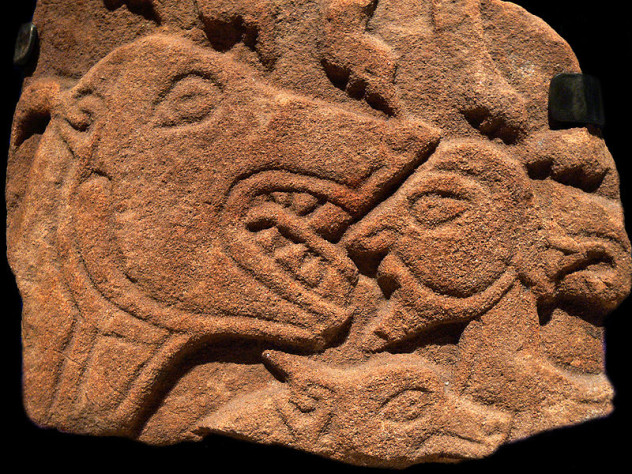
Among the most popular types of art found across Scotland are ring-and-cup marks, which are patterns of concentric circles and lines carved into rocks. Some of the art may be as old as 5,000 years. The meaning of these patterns is lost to time, if they ever had meaning at all.
A more recent art phenomenon found in Scotland are Pict stones. These are relief sculptures carved into stone slabs similar to Egyptian hieroglyphs that depict people and animals. A statistical analysis of 200 Pict stones from the sixth century concluded that they aren’t simply pretty pictures—they represent a written language. The study, carried out by Exeter University, analyzed how often certain symbols followed others and found a pattern that matched many known ancient languages.
Unfortunately, the study didn’t bring us any closer to understanding what the stones actually mean. The lead author of the research, Rob Lee, suggests they may be lists of the dead. The vocabulary used on the stones seems to be quite limited, and we may never know just what the Picts were recording.
5The Disappearing Ninth Legion
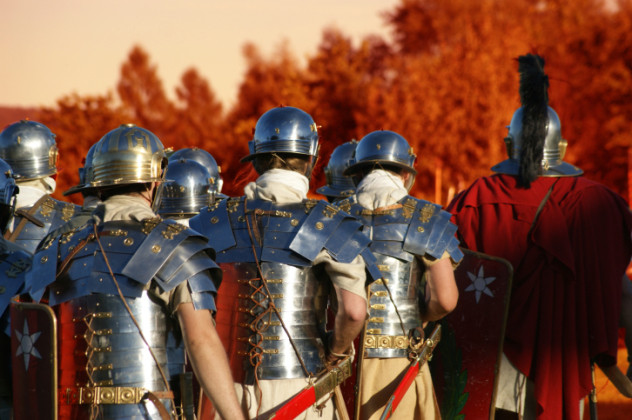
The Roman army’s Ninth Legion successfully conquered England in A.D. 43 and—with the exception of the odd rebellion—kept control of the bottom half of Britain for the next 74 years. Then, from A.D. 117 onward, the entire legion suddenly vanished from the historical record. Today, no one has any idea what happened to them.
One of the most popular theories is that they marched north into Scotland to fight an uprising of the Picts. This story has gained traction in fiction as the basis of several books and films, but some historians believe the legion simply left to go fight elsewhere. It’s also been speculated they were defeated in a battle against Rome’s nemesis, the Parthians, in Iran. Another possibility is that they lost against a Jewish uprising in A.D. 132.
One clue suggests that things had started to go wrong for the Ninth even before that time. When Emperor Hadrian turned up in A.D. 122, he brought another legion with him, the Sixth. He proceeded to build a wall across the north of England, then called Britannia, to keep out the people north of the border. If they had recently wiped out a renowned arm of his military, that would have beeen a very good reason to erect such a structure.
4The Missing Library Of Iona

In A.D. 563, missionary St. Columba and his followers landed on the Scottish island of Iona. It was there that he founded a monastery, which became a capital of knowledge during the Dark Ages. Kings were buried there, and people made pilgrimages to benefit from the wisdom of the monks. The monastery there was filled with the best writings of the age—most of which have vanished.
The only known survivor is The Book of Kells, which is preserved at Trinity College in Dublin. Many believe the rest were destroyed by Viking raiders who attacked in the ninth century, but some historians believe the books may have survived. They suggest that the books may have been taken to Ireland or buried nearby to keep them safe.
While archaeological digs on nearby islands in the 1950s proved fruitless, there’s a chance that the missing knowledge could still be nearby. After all, the Dead Sea Scrolls are centuries older, and a shepherd simply stumbled upon them in a cave. An immense written record may exist from a time period that gets its name from the lack of such a thing, but we simply don’t know where it is.
3The Fate Of David Stewart
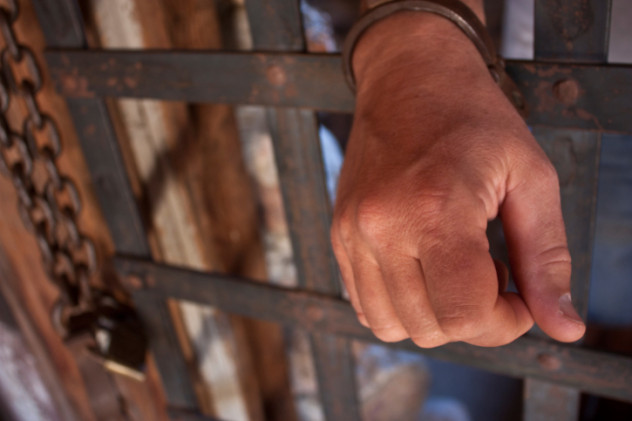
David Stewart, Duke of Rothesay, was the unfortunate victim of a royal family feud. His father was Robert III, the King of Scots. Unfortunately, when Robert took the throne in 1390, he lacked the backing he needed to rule effectively. Support among the nobility was for Robert’s younger brother, Robert Stewart, Duke of Albany. (That’s not a mistake—both brothers were called Robert at that point. Robert III had been born John Stewart, but he changed his name to Robert when he became king.) In 1399, David was appointed by his father to lieutenant of the kingdom, but his uncle wasn’t too pleased about the young lad gaining so much power. In order to maintain his stranglehold on Scotland, the younger Robert had his nephew arrested in 1401.
No one knows exactly what happened to David Stewart after that. It’s believed that he may have been starved to death in the dungeons. One story claims that he ate his own hands in a desperate bid to survive. The Duke of Albany claimed that David had simply died of dysentery. Either way, it’s believed that he was buried in an unmarked grave in Lindores Abbey, and the current owners of the land are using underground imaging in an attempt to locate the body. If they find it, they plan to use DNA to confirm it is the prince and set the record straight about how he died.
2The Great Mull Plane Mystery

There is very little that makes sense about the disappearance and death of Peter Gibb. On Christmas Eve 1975, just after he’d finished dinner and a bottle of claret in a hotel on the Isle of Mull, the former Royal Air Force flying ace announced he was going out for a flight in his Cessna plane. The staff and hotel guests suggested that it wasn’t such a good idea, to which he responded “I am not asking permission, I just thought it was courtesy to let you know. I don’t want a fuss.”
He left with his dining companion Felicity Granger, a former university lecturer. She later reported that Gibb had given her instructions to stand at one end of the runway with torches to guide his takeoff. Multiple witnesses claim two torches moved independently in ways that would require another person to be helping, though Granger claimed there was only her. Gibb took off, and shortly thereafter, a sleet storm rained down that would last for 72 hours. Gibb didn’t come back.
While his motives were baffling enough, the real mystery began four months later, when Gibb’s body was found on a nearby hillside. A pathologist ruled that he had died of exposure. There was a cut in Gibb’s leg but no other injuries. Tests also concluded that neither his body nor his clothes had been in contact with the sea, so he had definitely exited the plane on land, but no one could find the plane. Mull is not a large island—about the same land area as Dallas—so the disappearance of the craft was quite troubling. A light aircraft matching the description was found in 1986 in the sea between Mull and the mainland, but the doors were locked, and the plane had apparently crashed extremely hard. The wings were a significant distance away from the rest of the fuselage. It suggested the sort of impact that a person wouldn’t get out of without serious injury.
Two explanations have been suggested, neither of which sound likely. The first is that Gibb leaped from his plane while it was in midair above the hill. He landed on the hill without suffering anything worse than a cut leg, then lay down and died in the cold. The problem with that explanation is that the aircraft would have been left to fly itself into the sea while the doors somehow locked themselves. The other theory is that Gibb was working for MI5 and had to attend to an urgent mission in Northern Ireland. He was captured by terrorists, somehow killed without being injured in any way, and his body was planted back on Mull. The light aircraft found in the sea is left out of that theory. Then again, it doesn’t make much less sense than the alternative.
1The Glasgow Effect

The people of Scotland have one of the lowest average life expectancies in all of Europe. This average is heavily skewed by the people of Glasgow, where life expectancy can be as low as 54 years in some areas. Poverty is a partial explanation, but there are plenty of cities in the UK that are just as deprived and experience a much lower rate of premature death. The usual candidates of smoking, alcohol, and drugs are also significant factors, but Glasgow’s life expectancy is inexplicably low, even when all of that is taken into account.
This phenomenon has been called the Glasgow effect, but no one knows what causes it. There are numerous competing theories, blaming everything from the weather to the local culture to political scheming from both sides of the spectrum. It’s not just Glasgow—the figures for Scotland as a whole don’t look great. Life expectancy has been increasing more slowly than in many places, as other countries that used to lag behind Scotland’s rate shoot ahead. The reasons are no better understood than those behind the Glasgow effect itself.
+Bluejacket Boy

This touching mystery has the distinction of having finally been solved. In 1949, a woman living in Kirkwall, a town on the Orkney Islands, found a letter behind her fireplace. She had no idea how it had ended up there, but it looked very old and was addressed to Wales. When she opened it, she saw that it was dated 1916. The author had signed simply as “Bluejacket Boy.”
The letter seemed to be a general update on family life. The author wrote about a toddler named Ethel, and the description suggests she was his niece. Bluejacket Boy also referenced a sister named Hannah. The addressee was a man named John Phillips. In November 2013, historians from the Orkney Archive made a public request for help in the Welsh town the letter was intended to reach.
Internet sleuths were able to track down a woman named Mary Hodge, who turned out to be the granddaughter of the Bluejacket Boy. His name was David John Phillips, and he’d been stationed on Orkney with the navy during World War I. He married a local woman, whose family lived on the street where the letter was found, before the two of them moved to Wales to start a family. In 2014, 98 years later, the letter was finally delivered.
Alan hopes that we’ll find a series of books around Iona that reveal the language of the Picts and that the stones explain what happened to the Ninth Legion. He recommends visiting Edinburgh around Christmas.

